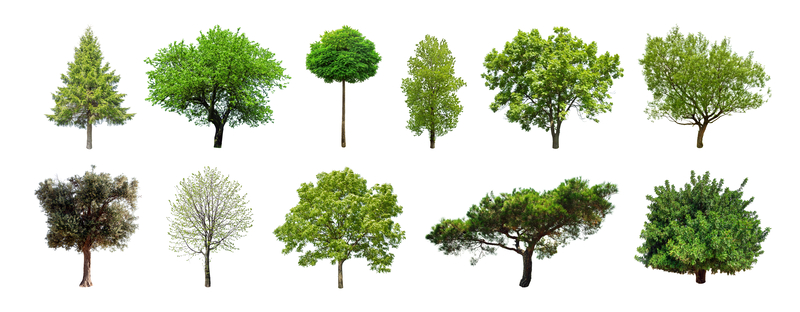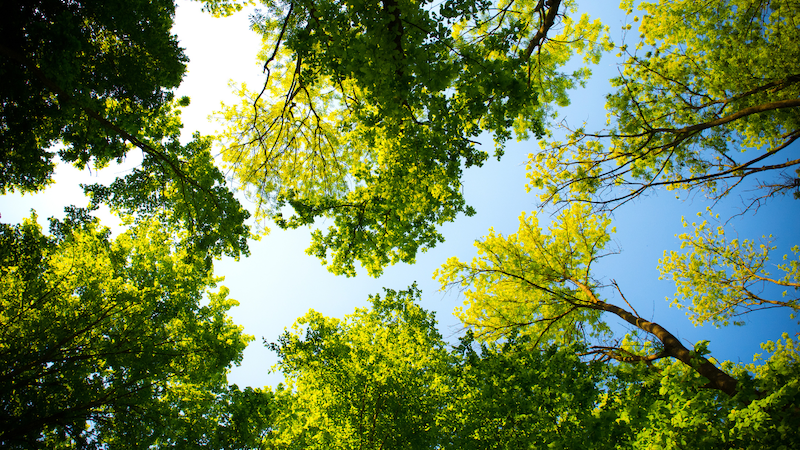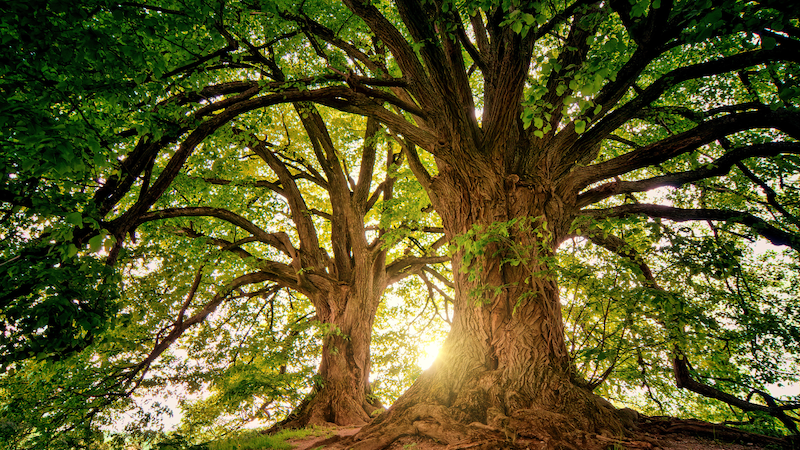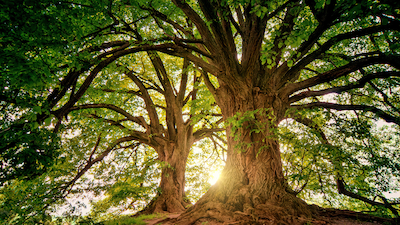In a world grappling with environmental challenges, trees stand as nature’s guardians, providing a wealth of benefits that often go unnoticed. This blog delves into the significance of trees, exploring their environmental and aesthetic value. From purifying the air we breathe to beautifying our surroundings, trees are indispensable allies in our quest for a sustainable future. As we delve into the significance of trees, it becomes evident that proper seasonal tree care plays a crucial role in safeguarding their health and longevity, ultimately contributing to a more sustainable future. Join us as we embark on a journey to understand and appreciate these majestic beings and discover how we can ensure their well-being.

The Benefits of Trees: Exploring the Environmental and Aesthetic Value of Trees
Trees, the sentinels of our planet, bestow upon us a myriad of environmental and aesthetic gifts. They stand as nature’s purifiers, diligently absorbing harmful pollutants from the air, transforming it into life-giving oxygen. Their leafy canopies provide welcome shade, mitigating the harsh effects of the sun and reducing the urban heat island effect. Trees are also energy-efficient marvels, acting as natural insulators that reduce the demand for heating and cooling, thereby promoting energy conservation.
Furthermore, trees serve as guardians of our water resources. Their intricate root systems act as natural filters, absorbing runoff and filtering pollutants, ensuring the purity of our water bodies. These arboreal wonders also create havens for wildlife, providing habitat and sustenance for a diverse array of creatures, thus supporting biodiversity and enriching the ecological tapestry of our planet.
Beyond their environmental contributions, trees also enhance our quality of life in profound ways. Their majestic presence adds aesthetic charm to our surroundings, transforming concrete jungles into verdant sanctuaries. Parks and green spaces adorned with trees offer tranquil retreats, inviting us to escape the hustle and bustle of daily life, find solace, and reconnect with nature.
Tree Maintenance Basics: Essential Tips for Keeping Your Trees Healthy

Watering is one of the most important things you can do for your trees. Trees need deep, infrequent watering, especially during hot, dry weather. Mulching around the base of the tree can help to retain moisture and keep the roots cool.
Fertilizing is also important for tree health. Trees typically need to be fertilized once a year, in the spring or fall. Pruning is necessary to remove dead, diseased, or damaged branches. Pruning can also help to improve the tree’s structure and appearance.
Mulching helps to retain moisture, moderate soil temperature, and protect the roots from damage. Organic mulch, such as wood chips or compost, is best.
Protecting your trees from pests and diseases is also important. You can do this by inspecting your trees regularly for signs of trouble, such as wilting leaves, yellowing leaves, or holes in the leaves. If you find any signs of trouble, you should contact a certified arborist.
Spotting Trouble: Identifying Common Tree Problems and Seeking Professional Help
Tree owners should regularly inspect their trees for signs of trouble. Common tree problems include:
- Diseases: Fungal infections, bacterial infections, and viral infections can all cause tree diseases.Symptoms of tree diseases can include wilting leaves, yellowing leaves, and holes in the leaves.
- Physical damage: Trees can be damaged by storms, construction, and vandalism. Physical damage can cause branches to break, bark to be stripped, and roots to be exposed.
- Insect infestations: Insects can infest trees and cause damage to the leaves, bark, and wood. Signs of insect infestations include holes in the leaves, sawdust on the ground, and insects crawling on the tree.
- Changes in the soil around the tree: Changes in the soil around the tree can also cause problems. These changes can include compaction, erosion, and changes in pH. Symptoms of changes in the soil around the tree can include wilting leaves, yellowing leaves, and stunted growth.
If you notice any of these signs of trouble, you should contact a certified arborist. A certified arborist can diagnose the problem and recommend the best course of treatment.
DIY Tree Care: Simple Tasks You Can Do to Maintain Your Trees

If you’re looking to keep your trees healthy and thriving, there are several simple tasks you can do yourself. These include:
- Watering: Trees need deep, infrequent watering, especially during hot, dry weather. The best way to water a tree is to use a soaker hose or drip irrigation system that delivers water directly to the roots. Avoid watering the leaves, as this can promote the growth of fungal diseases.
- Mulching: Mulching around the base of the tree can help to retain moisture, moderate soil temperature, and protect the roots from damage. Organic mulch, such as wood chips or compost, is best. Apply a layer of mulch 2-3 inches thick, and keep it away from the trunk of the tree.
- Pruning: Pruning is necessary to remove dead, diseased, or damaged branches. It can also help to improve the tree’s structure and appearance. Prune trees in the late winter or early spring, before new growth begins.
- Fertilizing: Trees typically need to be fertilized once a year, in the spring or fall. Use a balanced fertilizer that is formulated for trees. Follow the directions on the fertilizer package carefully.
- Watching for signs of pests or diseases: Regularly inspect your trees for signs of trouble, such as wilting leaves, yellowing leaves, or holes in the leaves. If you find any signs of trouble, you should contact a certified arborist.
By following these simple tips, you can help to keep your trees healthy and beautiful for years to come.
When To Call a Professional: Recognizing Situations That Require Expert Assistance
There are several instances when seeking professional assistance for tree care becomes crucial. Recognizing these situations ensures the well-being of your trees and prevents potential hazards. Here are some key indicators that warrant the intervention of a certified arborist:
- Signs of Disease or Pest Infestation: If you notice unusual changes in the appearance of your tree, such as wilted or discolored leaves, unexplained leaf loss, or the presence of insects or fungi, it’s advisable to consult a professional. Early detection and treatment can prevent the spread of diseases or infestations, preserving the health of your tree.
- Structural Damage or Decay: Trees that have suffered structural damage due to storms, accidents, or natural aging may require professional attention. Visible cracks, splits, or leaning trunks can compromise the stability of the tree, posing a safety risk. Additionally, internal decay, though not always apparent, can weaken the tree’s structure, making it vulnerable to collapse.
- Electrical Hazards: Trees in close proximity to power lines or electrical equipment pose a significant safety hazard. Trimming or removing branches near electrical wires requires specialized knowledge and equipment to avoid accidents and power outages. It’s essential to engage a professional tree service company with expertise in handling electrical hazards safely.
- Tree Removal: Safely and efficiently removing a tree, especially large or hazardous ones, demands professional skills and equipment. Factors such as the tree’s size, location, and proximity to structures require careful consideration and planning to prevent damage to property or injury to individuals.
- Legal or Insurance-Related Concerns: In some cases, tree care involves legal or insurance matters. For instance, disputes with neighbors regarding tree ownership or damage caused by falling branches may necessitate professional assessment and documentation. Similarly, insurance claims related to tree damage or removal often require expert reports and recommendations.

By promptly addressing these situations and seeking professional assistance, you can ensure the health and safety of your trees, protect your property, and avoid potential legal or financial complications.
Final Thoughts
In conclusion, trees are an invaluable asset to our environment and our lives. By following the tips outlined in this guide, you can help to ensure that your trees thrive and continue to provide their many benefits for years to come. Remember, regular maintenance and care are essential forkeeping your trees healthy and beautiful. If you notice any signs of trouble, don’t hesitate to contact a certified arborist for professional assistance. By taking these steps, you can become a ‘Green Guardian’ and contribute to the preservation of these natural wonders for future generations.

